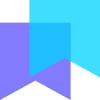Valur’s South Dakota trusts are directed trusts, which means that from time to time during the administration of the trust, a so-called “letter of direction” will have to be sent to the trustee. You’re probably wondering: What are directed trusts? and What are letters of direction? This article provides the context you need to understand both terms.
What is a Directed Trust?
In order to understand what letters of direction do, you have to understand the term “directed trust.” A directed trust is a type of trust that is structured so that the trustee carries out administrative functions while “advisors” direct the trustee with respect to investments and distributions.
Valur’s trusts typically have two advisors: an “investment advisor,” whose job is to make investment decisions, and a “distribution advisor,” whose job is to make distribution decisions. (Often, the distribution advisor role is left vacant until years after a trust is created.) This structure allows the grantor to name people who the grantor trusts to personally control specific investment and distribution decisions, while allowing the trustee to professionally administer the trust. This reduces the cost of administering a South Dakota trust, and allows us to pass on that savings to the consumer.
What is a Letter of Direction?
A letter of direction is a letter that an advisor sends to the trustee notifying the trustee of what the advisor wants the trustee to do. For example, if a trust is acquiring a life insurance policy, the investment advisor might send a letter of direction to the trustee to direct the trustee to sign the policy application. Likewise, if a distribution advisor decides to make a $20,000 distribution to a beneficiary, he or she will communicate that to the trustee through a letter of direction. Letters of direction are important because they are how advisors communicate their directions and exercise control over the trust.
What are the Required Features of a Letter of Direction?
Letters of direction have to be signed by the relevant advisors and sent to the trustee. And, of course, they have to communicate some sort of direction to the trustee. But other than that, there aren’t really any rules, though typically they’ll cite relevant laws and/or provisions of the trust agreement. Note that if there is more than one person acting in a single advisory role — for example, if there are two investment advisors — a majority of the individuals acting in that role will have to sign the letter of direction in order for it to be valid.
About Valur
We’ve built a platform that makes advanced tax planning – once reserved for ultra-high-net-worth individuals – accessible to everyone. With Valur, you can reduce your taxes by six figures or more, at less than half the cost of traditional providers.
From selecting the right strategy to handling setup, administration, and ongoing optimization, we take care of the hard work so you don’t have to. The results speak for themselves: our customers have generated over $3 billion in additional wealth through our platform.
Want to see what Valur can do for you or your clients? Explore our Learning Center, use our online calculators to estimate your potential savings or schedule a time to chat with us today!






























